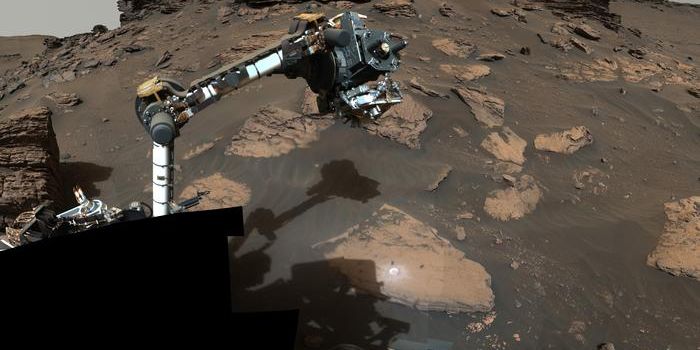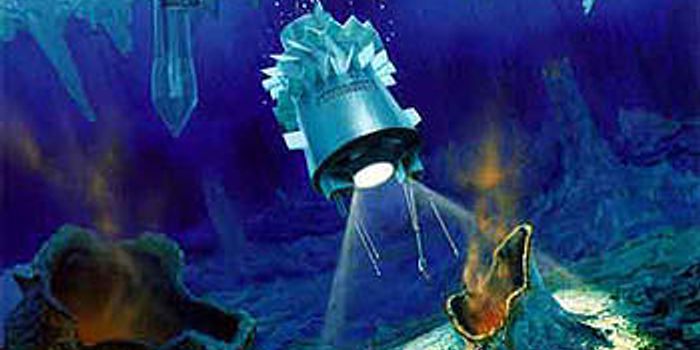"Tadpole" Gas Cloud Potentially Orbiting Black Hole
Artist's illustration of a "Tadpole" molecular gas cloud orbiting a black hole. (Credit: Keio University)
A collaborative team of Japanese scientists led by Keio University have analyzed data from the James Clerk Maxwell Telescope to examine a molecular cloud, which the researchers have nicknamed the “Tadpole” due to its unique shape, located approximately 27,000 light-years from Earth in the constellation Sagittarius that is orbiting a dark object. While this gas cloud exhibits a curved shape, indicating it’s being stretched during its orbit, no bright objects exist in the region to keep the Tadpole in orbit around it.
Dr. Miyuki Kaneko of Keio University recently told Labroots that the “spatial-velocity structure of the Tadpole indicates the existence of an intermediate black hole” while referring to the Tadpole as a “really interesting molecular cloud.” While the researchers hypothesize the mass of the black hole could be approximately 100,000 times greater than our own Sun, its existence is still speculative.
Since black holes don’t emit light, the only way to detect them is by observing their interactions with objects in close proximity, which sometimes occurs when a black hole is consuming a nearby star, as NASA recently observed. But as this study indicates, other objects can also be affected by the enormous gravity of black holes.
Dr. Kaneko recently told Labroots that if this object is indeed a black hole, then it “teaches us that the super-massive black holes in the galactic centers may be formed and evolved through the merger of intermediate black holes.”
For next steps, the researchers intend to use ALMA (Atacama Large Millimeter/submillimeter Array) in hopes of detecting faint traces of a black holes, or another object that could be responsible for gravitationally binding the Tadpole in orbit around it.
Is a black hole responsible for the Tadpole’s orbit and stretched appearance, and what other objects will scientists observe orbiting black holes in the coming years and decades? Only time will tell, and this is why we science!
Sources: The Astrophysical Journal, NASA
As always, keep doing science & keep looking up!









